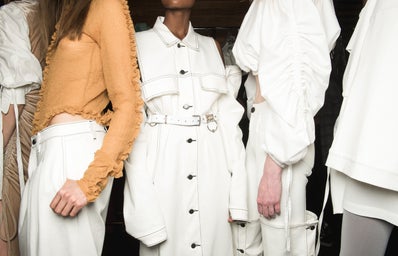I will not make any accusations with this article to people that get their clothes on Shein. I myself have bought many of my outfits from Shein, but after hearing one of my closest friends talk about how bad it is to get stuff not only from Shein but also from Zara, H&M and even Forever 21 it really made me think twice and do some research on fast fashion.
What is fast fashion?
Goingzerowaste.com defines fast fashion as inexpensive clothing produced quickly by large retailers to keep up with ever changing trends. Also, Fashion Revolution defines it as The globalised market for fashion manufacturing has facilitated a “fast fashion” phenomenon; cheap clothing, with quick turnover that encourages repurchasing. But there is more going on in fast fashion than just cheap clothing and repurchasing a new wardrobe every month or season, starting by where that Shein shirt comes from and the thing with Fast fashion is that it will really make you want to know where and how these pieces of clothing are made. To begin with, Who makes your garment in these types of stores is someone who probably works in a factory located in Turkey, Mexico, China, Indonesia, India or Bangladesh, but why are they located in these countries? Well, for the simple reason that labor is much cheaper, and probably overtime, no food, no rest, no air, until little, and almost non-existent worker pay, labor is so cheap that can earn up to $ 1 an hour, especially in these countries mentioned above that are very poor, where offering less than a dollar for more than 16 hours of work to a person can be politically correct.In the Netflix documentary, True Cost, you can see the levels of injustice reached in these countries to the employees of these factories, they do not have benefits, and they are required a lot, the saddest thing is not that they even suffer physical abuse but if in the future they become ill, these companies don’t care and are not responsible at all. In addition to taking ethical repercussions into account, there are also environmental repercussions that have an irreparable impact. As mass production is on the rise, even lands have been damaged when they try to chemically alter them to produce more resources at a faster rate.
So, the next question is: how are my fast fashion clothes harming the environment? Besides taking basic human rights from people with families in underdeveloped countries.
Statistics of the world bank in September 2019 reflect that the fashion industry is responsible for 10% of carbon dioxide emissions and is the second industry worldwide that needs the most water. And according to Vogue Business, “The global apparel and footwear industry produced more greenhouse gases than France, Germany and the UK combined in 2018, totalling 2.1 billion tonnes of CO2 emissions — approximately four per cent of total global emissions. Without significant action, the figure could rise to around 2.7 billion tonnes a year by 2030.” Along with that, textile production requires about 79 billion cubic meters of water for growing raw materials and wet processing, causing large-scale pollution with toxic chemicals that severely damage watersheds, biodiversity, and soil. And the more we learn of the damage that fasst fashion does to our environment and to people in need, we realize that it is not worth it and we do not need that $ 5 garment, so the next time you want a Shein haul, better reflect how much will your action will affect lives and our planet earth.



